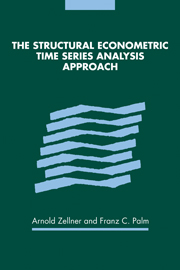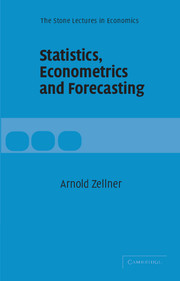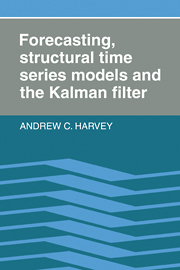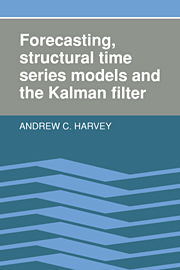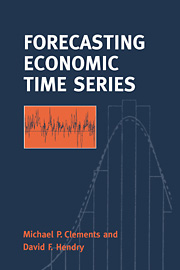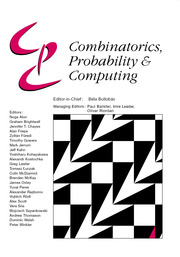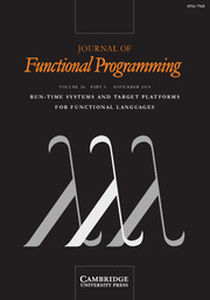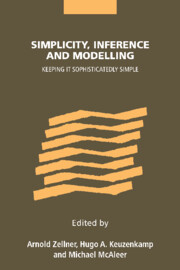The Structural Econometric Time Series Analysis Approach
Bringing together a collection of previously published work, this book provides a discussion of major considerations relating to the construction of econometric models that work well to explain economic phenomena, predict future outcomes and be useful for policy-making. Analytical relations between dynamic econometric structural models and empirical time series MVARMA, VAR, transfer function, and univariate ARIMA models are established with important application for model-checking and model construction. The theory and applications of these procedures to a variety of econometric modeling and forecasting problems as well as Bayesian and non-Bayesian testing, shrinkage estimation and forecasting procedures are also presented and applied. Finally, attention is focused on the effects of disaggregation on forecasting precision and the Marshallian Macroeconomic Model that features demand, supply and entry equations for major sectors of economies is analysed and described. This volume will prove invaluable to professionals, academics and students alike.
- Includes basic material on how to construct econometric models, with applied examples, including the Marshallian Macroeconomic Model
- Provides an overview of model checking and construction
- Brings together key texts in one volume
Product details
February 2011Paperback
9780521187435
736 pages
229 × 152 × 37 mm
1kg
Available
Table of Contents
- Introduction
- Part I. The SEMTSA Approach:
- 1. Time series analysis and simultaneous equation econometric models A. Zellner and F. C. Palm
- 2. Statistical analysis of econometric models A. Zellner
- 3. Structural econometric modeling and time series analysis: an integrated approach F. C. Palm
- 4. Time series analysis, forecasting and econometric modeling: the structural econometric modeling, times series analysis (SEMTSA) approach A. Zellner
- 5. Large sample estimation and testing procedures for dynamic equation systems F. Palm and A. Zellner
- Part II. Selected Applications:
- 6. Time series and structural analysis of monetary models of the US economy A. Zellner and F. Palm
- 7. Time series versus structural models: a case study of Canadian manufacturing inventory behavior P. K. Trivedi
- 8. Time series analysis of the German hyperinflation P. Evans
- 9. A time series analysis of seasonality in econometric models C. I. Plosser
- 10. The behavior of speculative prices and the consistency of economic models R. I. Webb
- 11. A comparison of the stochastic processes of structural and time series exchange rate models F. W. Ahking and S. M. Miller
- 12. Encompassing univariate models in multivariate times series: a case study A. Maravall and A. Mathis
- Part III. Macroeconomic Forecasting and Modeling:
- 13. Macroeconomic forecasting using pooled international data A. Garcia-Ferrer, R. A. Highfield, F. Palm and A. Zellner
- 14. Forecasting international growth rates using Bayesian shrinkage and other procedures A. Zellner and C. Hong
- 15. Turning points in economic time series, loss structures and Bayesian forecasting A. Zellner, C. Hong and G. M. Gulati
- 16. Forecasting turning points in international output growth rates using Bayesian exponentially weighted autoregression, time-varying parameter and pooling techniques A. Zellner, C. Hong and C. Min
- 17. Bayesian and non-Bayesian methods for combining models and forecasts with applications to forecasting international growth rates C. Min and A. Zellner
- 18. Pooling in dynamic panel data models: an application to forecasting GDP growth rates A. J. Hoogstrate, F. C. Palm and G. A. Pfann
- 19. Forecasting turning points in countries' output growth rates: a response to Milton Friedman A. Zellner and C. Min
- 20. Using Bayesian techniques for data pooling in regional payroll forecasting J. P. LeSage and M. Magura
- 21. Forecasting turning points in metropolitan employment growth rates using Bayesian techniques J. P. LeSage
- 22. A note on aggregation, disaggregation and forecasting performance A. Zellner and J. Tobias
- 23. The Marshallian macroeconomic model A. Zellner
- 24. Bayesian modeling of economies and data requirements A. Zellner and B. Chen.

